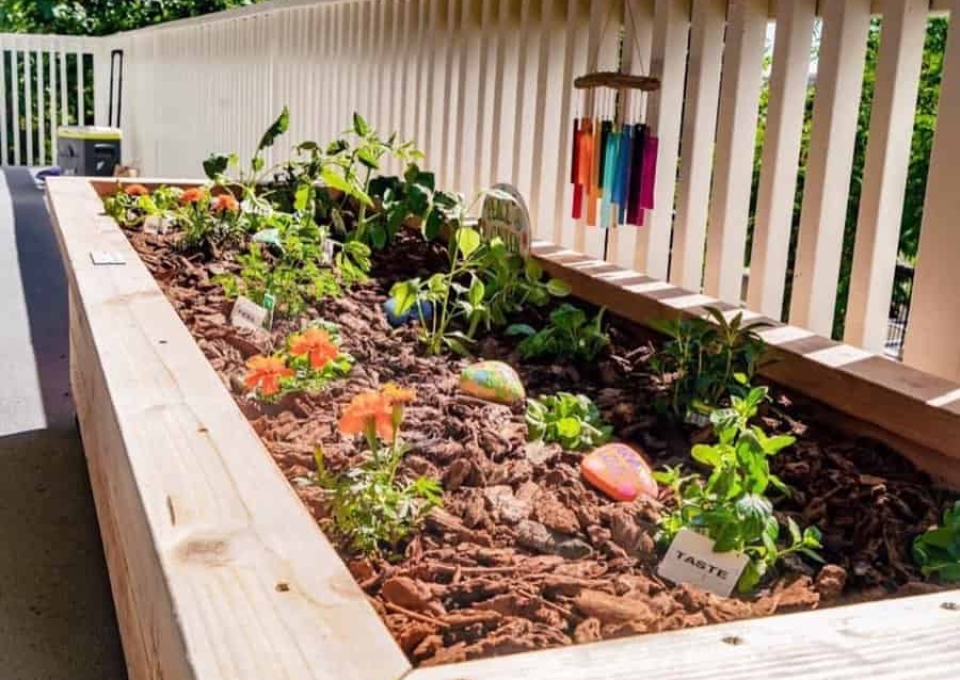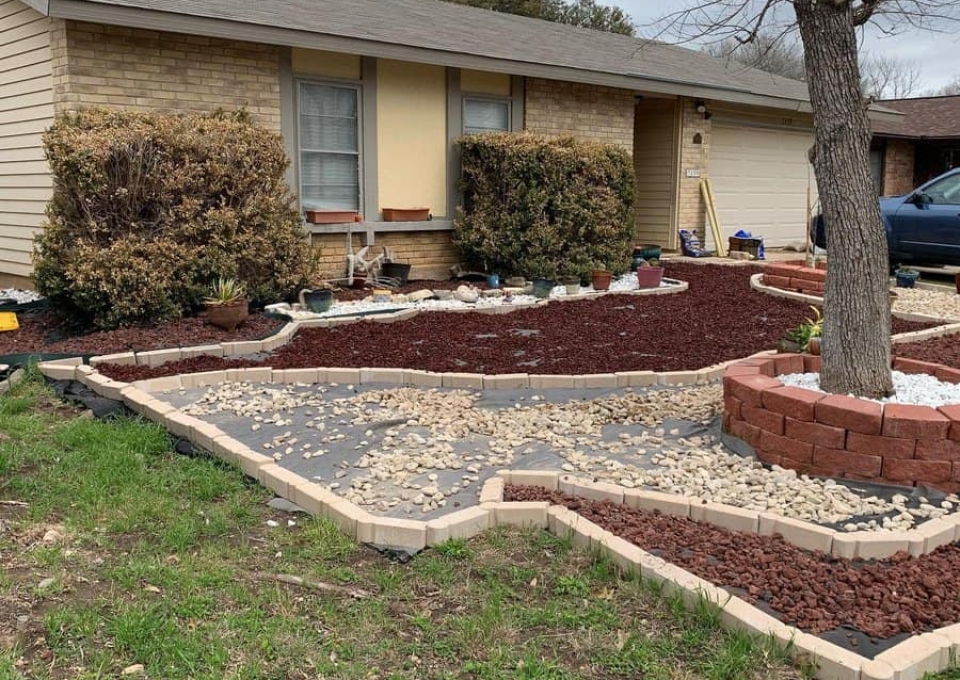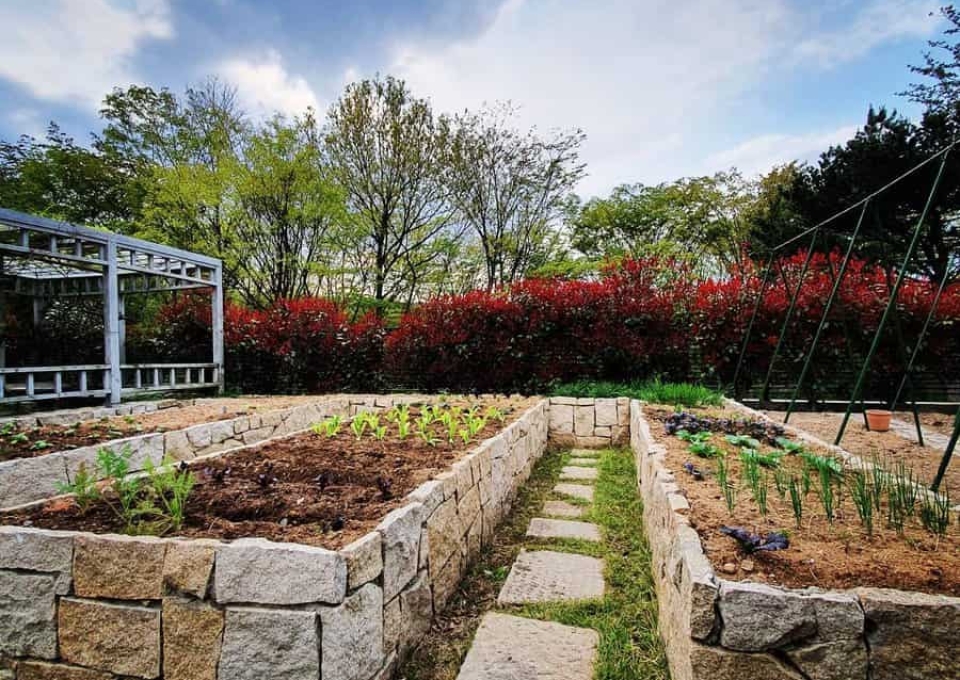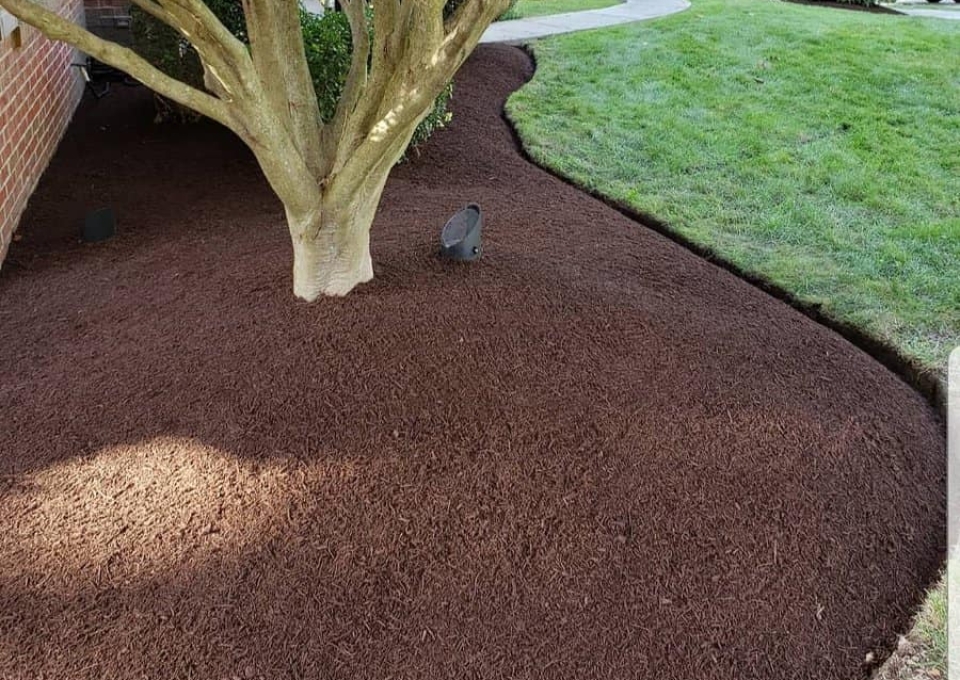Introduction to Garden Edging
Contents

Definition and Purpose
Garden edging creates distinct boundaries in your landscape, separating different areas or materials for practical and visual reasons. It defines garden beds, stops grass from spreading into planting areas, and improves the overall look of your garden.
Importance of Garden Edging in Landscape Design
Visual Appeal: Edging creates defined lines and shapes, adding structure to your garden. Practical Benefits: It makes maintenance easier and keeps your garden organized. By using strategic edging, you enhance both the design and functionality of your outdoor spaces, making them more attractive and manageable.
Types of Garden Edging Materials
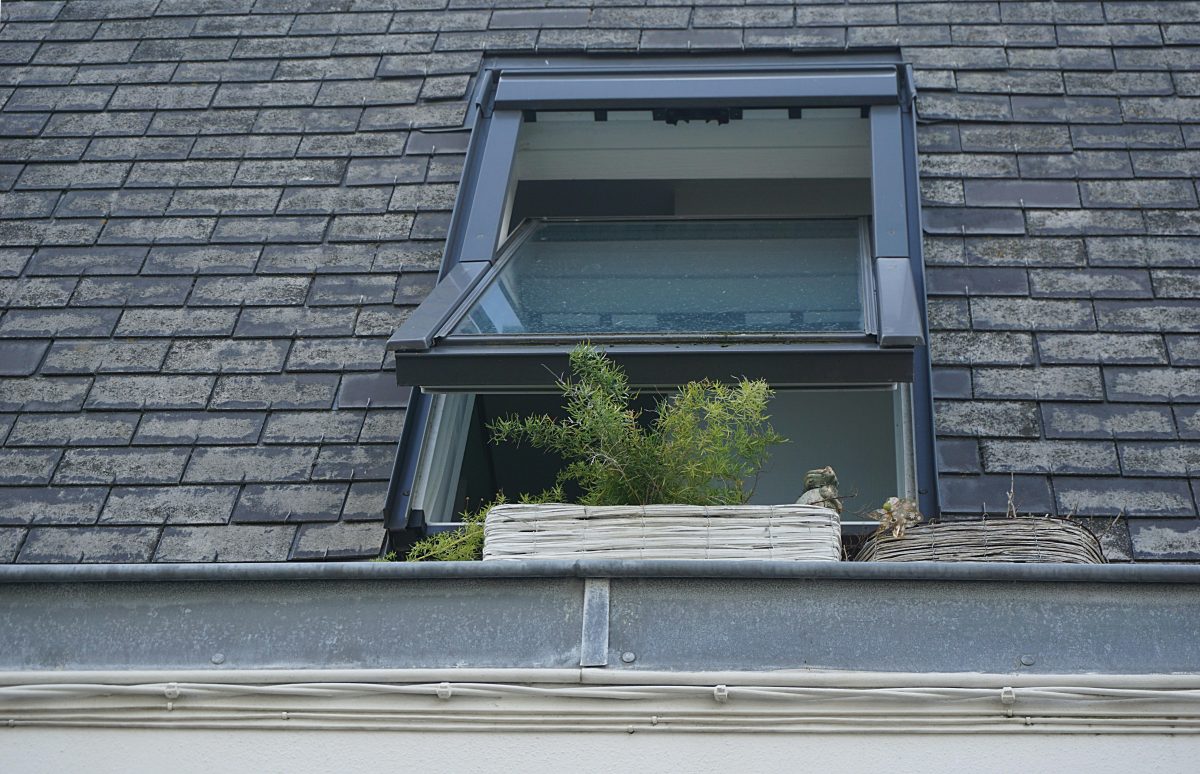
Overview of Different Materials
Selecting the appropriate material for garden edging can significantly enhance both the appearance and functionality of your landscape. Options range from natural stones to modern plastics, each providing distinct aesthetic and practical advantages.
Pros and Cons of Each Material Type
- Stone: Natural and durable. Complements traditional garden styles and lasts for decades. Heavy to handle and expensive.
- Brick: Classic and versatile. Can be laid in various patterns for a timeless appeal. Requires skill to install and can shift over time if not secured.
- Metal: Sleek and sturdy. Ideal for contemporary gardens. Durable and maintains crisp lines but can rust in certain environments.
- Wood: Warm and natural. Provides a soft, organic look but needs treatment to prevent rot and termite damage.
- Plastic: Affordable and easy to install. Flexible, making it ideal for curved borders. May not offer the same longevity or aesthetic as natural materials.
Planning Your Garden Edging

Assessing Your Garden’s Needs
Before focusing on aesthetics, consider the functional aspects of your garden. How do you use the space? Do you need clear pathways? Are there flower beds next to the lawn? Understanding these elements will guide your edging choices, ensuring they are both practical and decorative.
Design Considerations and Layout Planning
Plan the flow of your garden. Edging can create smooth transitions between different areas. Think about the overall shape and contours of your landscape. Curved lines provide a natural, soft appearance, while straight edges convey formality and order. Select materials that match your garden’s style and consider their durability and maintenance needs to enhance both beauty and functionality.
Installation Tips for Garden Edging
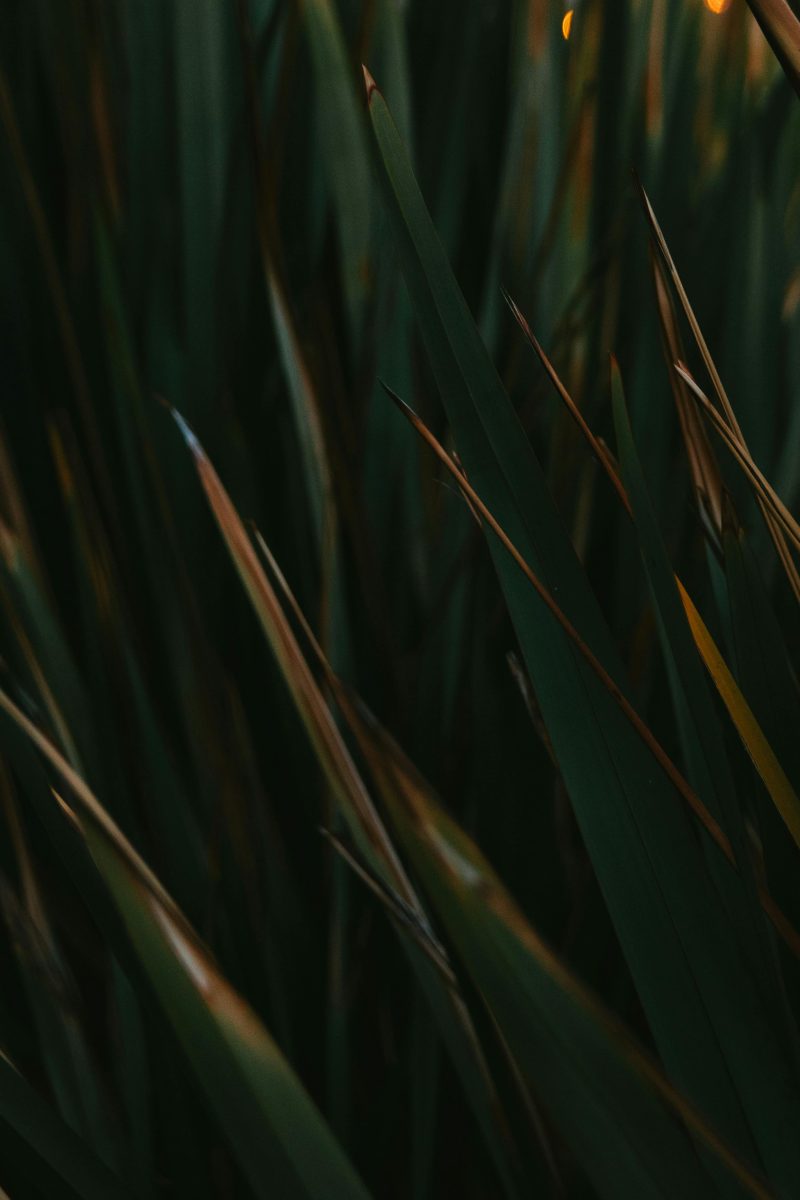
Preparation Steps
Start with a clear plan. Measure your garden’s perimeter to calculate the required edging material. Remove any debris and level the soil to ensure a smooth installation. This preparation is essential for a neat appearance and durable results.
Installation Techniques for Various Edging Types
- Stone: Dig a trench slightly wider than the stones. Place them tightly together and backfill with soil to secure.
- Brick: Lay bricks in a trench with a sand base for stability. Use mortar for a permanent setup.
- Metal: Metal edging comes in long strips. Insert them directly into the ground, interlocking as you proceed.
- Wood: Treat the wood before installation. Bury part of the wood in the ground for added stability.
- Plastic: Flexible and easy to install, hammer plastic edging into the soil using stakes.
Maintenance and Care for Garden Edgings

Routine Maintenance Tips
Regular maintenance is crucial to keep your garden edging looking sharp. Periodically inspect the perimeter of your garden for any shifts or damage in the edging materials. For wood or metal edging, check for weathering or rust and address these issues promptly to prevent further damage. Weed around the edges and trim any overgrowth to maintain clean boundaries and prevent invasive plants from disrupting the edging structure.
Long-Term Care Strategies
- Reinforcement: Every few years, bolster your edging by adding fresh soil or sand underneath and around it. This support helps prevent sagging and separation.
- Replacement: Check materials like plastic or wood for signs of wear or decay. Replace sections as needed to avoid larger repairs later.
- Seasonal Adjustments: Prepare for weather changes, especially freezing and thawing cycles, which can impact the stability of your edging. Adjust or realign materials to counteract natural shifting.
Garden Edging Design Ideas
Metal Garden Edging Ideas
Imagine the clean, defined lines of metal garden edging as the perfect border for your outdoor space. Its durable nature withstands the elements, creating a lasting edge that combines style with practicality. Metal adapts to your garden’s design, whether in straight lines or curved patterns, delivering precise results.
Consider the appeal of rusted steel edging. It offers an industrial look that frames your plants with care, drawing attention along its path. This edging fits well in modern landscapes or traditional gardens, seamlessly blending different styles.
Metal edging is the ultimate low-maintenance, high-impact garden design. It’s not just a boundary; it’s the framework of your outdoor space.

- Design Versatility: Customize your garden’s edge to match your style, from industrial to elegant.
- Enduring Quality: Choose metal for its longevity and ability to withstand the elements.
- Seamless Integration: Connect different garden areas with the flexible nature of metal edging.
Transform Your Garden with Wood Pallet Edging
Step into a world where sustainability meets style. Wood pallet garden edging adds rustic charm to your outdoor space, offering a cost-effective and eco-friendly solution.
Imagine the possibilities: wood pallets can be arranged into linear accents or geometric shapes, framing your garden or highlighting your flower beds. These sturdy wooden pieces help prevent soil erosion and maintain clear boundaries between pathways and plant life.
Choosing wood pallet edging is a practical blend of environmental stewardship and design. It aligns your gardening efforts with eco-friendly practices, creating a responsible and attractive border for your garden.
Stone Garden Edging: A Symphony of Elegance and Durability
Imagine the lasting appeal of stone garden edging. It’s a blend of nature’s raw beauty and human craftsmanship. Stone edging is more than a boundary; it highlights and guides the eye through your garden’s landscape.
With its strength and low upkeep, stone is a key element in garden design—weather-resistant and naturally beautiful. Whether you choose the clean lines of concrete bricks or the rustic look of natural rocks, each option complements your garden’s style.
Proper placement is crucial; each stone should enhance the garden’s overall look. The result is a landscape that draws attention with its crafted beauty.
- Design Versatility: Match your garden’s theme with the ideal stone texture and color.
- Timeless Appeal: Stone edging ages gracefully, becoming more distinguished over time.
- Functional Elegance: Define flower beds, pathways, and lawns with precision and style.
Raised Garden Bed Edging Ideas
Transform your garden with carefully selected edging. Stone tiers add dimension and strength to your garden’s design. Opt for standalone plant boxes for a modern, clean look.
Concrete blocks offer a sturdy, classic edge, grounding your plants. For an industrial touch, corrugated steel provides dynamic contrast with its interplay of light and shadow.
Embrace Unconventionality with Unique Garden Edging
Step beyond the ordinary and add a unique touch to your garden with creative edging. Unique garden edging is more than just a boundary; it’s a showcase of creativity. Consider using vintage plates, each with its own story, to outline your flower beds. Or use repurposed wine bottles, their curves catching the sunlight, creating a mosaic of light around your plants.
For those who are eco-conscious, upcycled pallet wood can be cut and arranged into striking patterns, combining innovation with environmental care. Alternatively, river stones can be laid to form a natural, flowing edge that blends seamlessly with the landscape.
These unconventional choices do more than mark the limits of your garden; they draw attention and become focal points. Each option adds character, transforming your outdoor space into a unique and personalized area.
- Vintage Plates – Ideal for a nostalgic, cottage-style garden.
- Wine Bottles – Creates a dazzling display that plays with light.
- Pallet Wood – A modern, geometric option that’s eco-friendly.
- River Stones – An organic choice that integrates with the natural environment.

Mulch Garden Edging Ideas
Transform your garden with the practical technique of mulch edging. Imagine the harmony of lush greenery framed by the earthy tones of mulch—a treat for the eyes. This method not only boosts visual appeal but also improves your garden’s health, retaining moisture and preventing weed growth.
Think of mulch as a backdrop, highlighting the vibrant colors of your flowers and shrubs. It’s a cost-effective solution that homeowners can implement easily, achieving a professional look. For added impact, consider using materials like stone or metal to enhance elegance and durability.
Mulch edging can protect and beautify your garden. It’s a smart, sustainable choice that enhances curb appeal.

Pebbles Garden Edging Ideas
Imagine the elegance of pebbles defining your garden’s edge, a blend of textures that both captivates and complements. Pebbles are not just a boundary; they are a statement, merging the manicured with the natural in a seamless design.
Each pebble, with its unique hue and shape, adds sophistication to your outdoor space. They are low-maintenance and resilient against the elements.
Consider using pebbles to frame pathways or to cradle the base of your trees. Depth and protection—pebbles offer both.
Whether your garden features modern elegance or rustic charm, pebble edging is a versatile choice that suits every style.

Corrugated Steel Garden Edging
Embrace the modern, industrial look of corrugated steel garden edging. This durable material combines strength with style, creating a contemporary boundary that lasts. Installation is straightforward, resulting in a clean, defined edge that enhances your garden’s appearance.
Picture your garden beds with crisp lines, highlighted by the metallic finish of corrugated steel. This design element stands out, blending seamlessly with minimalist landscapes or contrasting beautifully with lush greenery. Choosing corrugated steel means opting for a bold, practical solution.
Consider the benefits:
- Durability that withstands weather conditions, maintaining your garden’s structure.
- Efficiency in installation, saving you time and effort.
- Visual Appeal that adds a contemporary touch to your outdoor space.

Grass Trimming Garden Edging Ideas
Transform your garden with precision-cut grass edging. This technique clearly defines your garden’s borders, creating a clean line that separates your lawn from your flower beds. It’s a simple touch that adds significant visual appeal and structure to your outdoor space.
Incorporate elements like mulch and pebbles to enhance texture and color contrast. These materials not only beautify your garden but also help combat weeds and conserve soil moisture. A well-edged garden reflects meticulous care, a detail appreciated by those who value elegance.
Maintain these sharp lines with regular upkeep, and your garden will exemplify horticultural excellence. The charm of a neatly edged lawn is undeniable—a symbol of a garden tended with precision and care.
In Closing
In conclusion, garden edging serves as both a practical landscaping tool and a creative way to enhance your outdoor spaces. Whether you choose the rugged look of stone or the sleek design of metal, selecting the right materials and design can significantly improve your garden’s appearance and functionality. By incorporating these edging ideas, gardeners can create clear, attractive borders that define and highlight their green spaces. As we explore new and sustainable garden edging solutions, the potential to improve our landscapes grows, reflecting our creativity and environmental awareness.

